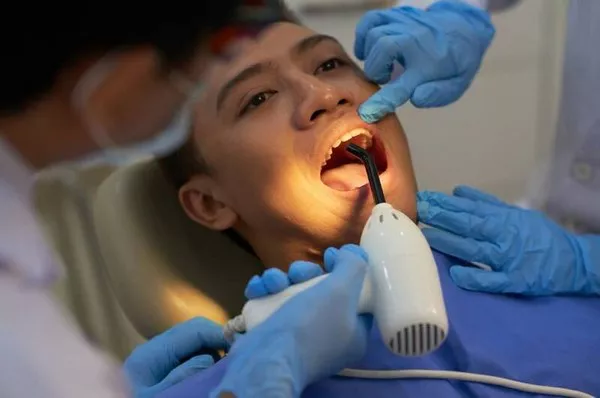In today’s fast-paced world, maintaining optimal oral health is often overlooked. Bleeding gums and bad breath can not only be embarrassing but also indicative of underlying dental issues. In this comprehensive guide, we will delve into effective strategies and tips on how to get rid of bleeding gums and bad breath, ensuring a confident and healthy smile. Let’s explore the key factors contributing to these concerns and the proactive measures you can take for optimal oral hygiene.
Understanding the Root Causes:
Bleeding gums and bad breath are often linked to inadequate oral hygiene. Poor dental care can lead to the buildup of plaque, a sticky film of bacteria on teeth, causing gum inflammation and ultimately resulting in bleeding gums. Additionally, the accumulation of bacteria in the mouth can lead to unpleasant odors, contributing to bad breath. To combat these issues, it is crucial to comprehend the root causes and address them systematically.
a. The Impact of Plaque Buildup:
Plaque, when left untreated, hardens into tartar, further aggravating gum inflammation. This can be mitigated through regular brushing, flossing, and professional dental cleanings.
b. Gum Disease and Its Consequences:
Gingivitis, an early stage of gum disease, is characterized by bleeding gums. If untreated, it can progress to periodontitis, causing irreversible damage to the supporting structures of the teeth. Adopting a proactive approach, such as regular dental check-ups, is crucial in preventing and managing gum disease.
Optimal Oral Hygiene Practices:
Maintaining a meticulous oral hygiene routine is fundamental in preventing bleeding gums and bad breath. Adopting proper brushing and flossing techniques can significantly contribute to the overall health of your gums and eliminate unpleasant odors.
a. Brushing Techniques for Healthy Gums:
Use a soft-bristled toothbrush and gentle, circular motions to clean teeth and gums. Brush at least twice a day, reaching all surfaces to remove plaque effectively.
b. The Importance of Flossing:
Flossing is an often neglected yet essential aspect of oral hygiene. It helps remove plaque and debris between teeth, areas often missed by brushing alone. Make flossing a daily habit to promote healthy gums and eliminate potential causes of bad breath.
Nutrition and Its Impact on Oral Health:
The role of nutrition in maintaining healthy gums and fresh breath should not be underestimated. A balanced diet rich in essential vitamins and minerals contributes to overall oral well-being.
a. Vitamin C for Gum Health:
Incorporate fruits and vegetables rich in vitamin C, such as oranges and strawberries, into your diet. Vitamin C plays a crucial role in collagen production, supporting gum tissue health and preventing bleeding.
b. Calcium-Rich Foods:
Calcium is essential for strong teeth and bones. Include dairy products, leafy greens, and fortified foods in your diet to fortify your teeth against decay and promote overall oral health.
Hydration and Its Role in Combatting Bad Breath:
Inadequate saliva production can contribute to bad breath, as saliva helps cleanse the mouth of bacteria. Staying adequately hydrated is a simple yet effective strategy to combat bad breath.
a. Drink Plenty of Water:
Water helps flush out bacteria and food particles, preventing the development of unpleasant odors. Make a conscious effort to stay hydrated throughout the day for optimal oral health.
b. Limiting Dehydrating Beverages:
Reduce the consumption of dehydrating beverages like alcohol and caffeine, as they can contribute to dry mouth and exacerbate bad breath.
The Role of Regular Dental Check-ups:
Regular visits to the dentist are a cornerstone of preventive dental care. Professional cleanings and thorough examinations can detect and address oral health issues before they escalate.
a. Scheduled Dental Check-ups:
Aim for bi-annual dental check-ups to ensure early detection of potential problems and to receive professional guidance on maintaining optimal oral health.
b. Professional Cleanings:
Professional cleanings remove stubborn plaque and tartar, reducing the risk of bleeding gums and bad breath. These cleanings also provide an opportunity for your dentist to offer personalized advice for your oral hygiene routine.
Conclusion:
In conclusion, achieving and maintaining healthy gums and fresh breath is a multifaceted endeavor that involves understanding the root causes, adopting optimal oral hygiene practices, prioritizing nutrition, staying hydrated, and scheduling regular dental check-ups. By incorporating these strategies into your daily routine, you can confidently say goodbye to bleeding gums and bad breath, welcoming a healthier and more vibrant smile.
Related Links:
How to improve bad breath through internal adjustment?
Will yellowed teeth cause odor?
How to Remove Yellow Stains from Teeth: A Comprehensive Guide































